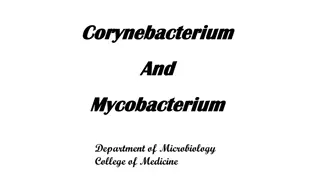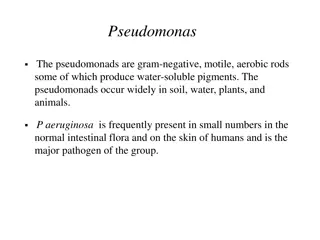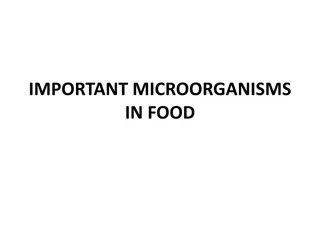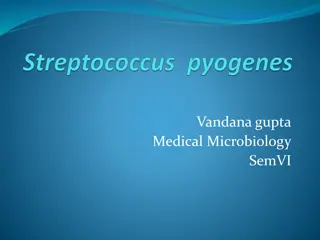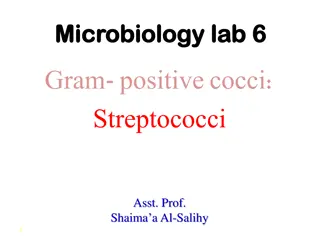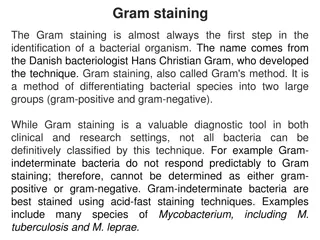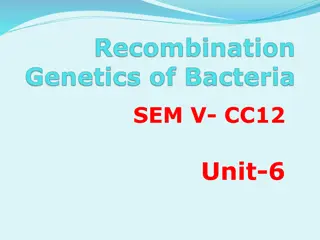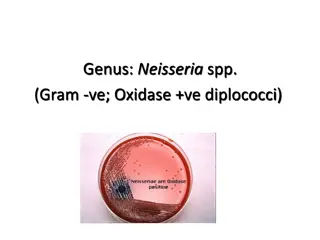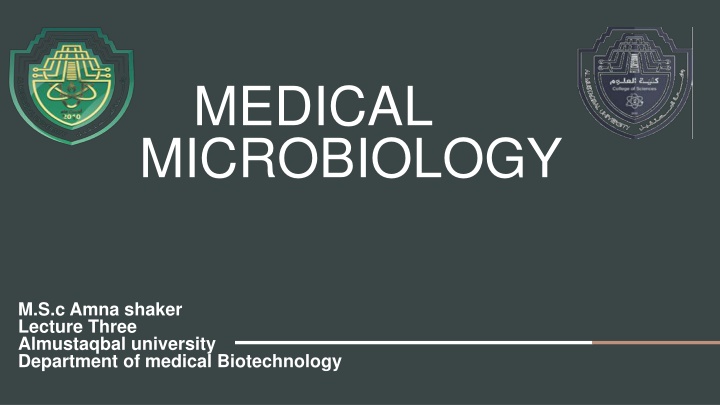
Laboratory Diagnosis of Gram-Positive Bacteria: Staphylococci & Streptococci
Sample collection, gram staining, culture techniques, and biochemical tests play crucial roles in the laboratory diagnosis of Gram-positive bacteria like Staphylococci and Streptococci. Understanding these steps is essential for accurate identification and differentiation of these bacteria, aiding in appropriate treatment strategies in medical microbiology.
Download Presentation

Please find below an Image/Link to download the presentation.
The content on the website is provided AS IS for your information and personal use only. It may not be sold, licensed, or shared on other websites without obtaining consent from the author. If you encounter any issues during the download, it is possible that the publisher has removed the file from their server.
You are allowed to download the files provided on this website for personal or commercial use, subject to the condition that they are used lawfully. All files are the property of their respective owners.
The content on the website is provided AS IS for your information and personal use only. It may not be sold, licensed, or shared on other websites without obtaining consent from the author.
E N D
Presentation Transcript
MEDICAL MICROBIOLOGY M.S.c Amna shaker Lecture Three Almustaqbal university Department of medical Biotechnology
2 LABORATORY DIAGNOSIS OF GRAM-POSITIVE BACTERIA STAPHYLOCOCCI AND STREPTOCOCCI The laboratory diagnosis of Gram-positive bacteria AND Staphylococci and Streptococci Staphylococci diagnosis involves several steps to identify and differentiate these bacteria. Staphylococci Sample Collection: Samples are collected from the site of infection (e.g., skin, nasal swabs). *Gram Staining: Staphylococci appear as Gram-positive cocci in clusters *Culture Techniques: Blood agar and Mannitol Salt Agar (MSA) are commonly used. S. aureus produces yellow or golden colonies on MSA due to mannitol fermentation
3 Biochemical Tests: 1-Catalase Test: Positive (distinguishes staphylococci from streptococci). 2-Coagulase Test: Positive for S. aureus (differentiates it from coagulase- negative staphylococci). 3-Novobiocin Sensitivity Test: Differentiates S. epidermidis (sensitive) from S. saprophyticus (resistant).
4 gram stain Gram staining is a technique used to differentiate bacterial species into two groups based on the physical and chemical properties of their cell walls The two groups are: 1- Gram-positive bacteria: These bacteria retain the crystal violet stain and appear purple under a microscope. They have a thick peptidoglycan layer in their cell walls. 2-Gram-negative bacteria: These bacteria do not retain the crystal violet stain but take up the counterstain (usually safranin) and appear red or pink. They have a thinner peptidoglycan layer and an outer membrane.
5 Streptococci diagnosis : Sample Collection: Samples are collected from the site of infection (e.g., throat swabs, blood) *Gram Staining: Streptococci appear as Gram-positive cocci in chains or pairs. Culture Techniques: Blood agar is used to observe hemolysis patterns. Hemolysis on Blood Agar: Alpha (partial), Beta (complete), or Gamma (none).
THANK YOU



